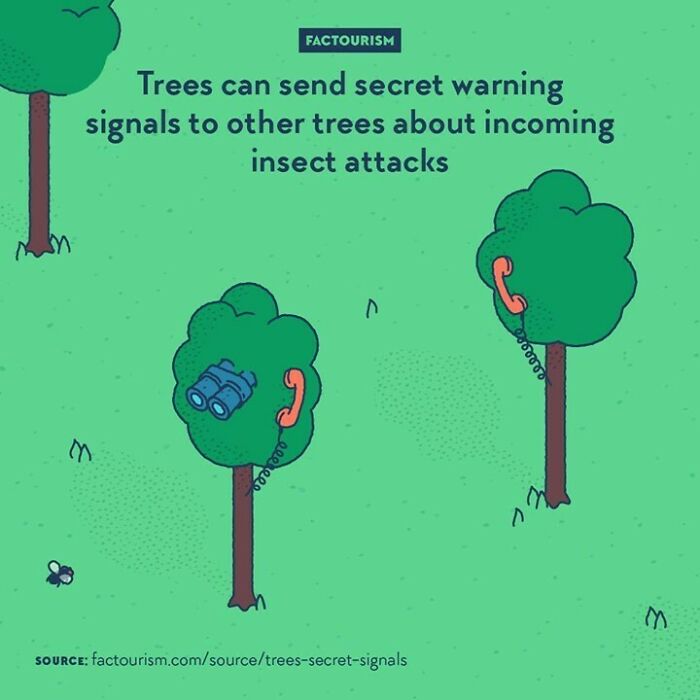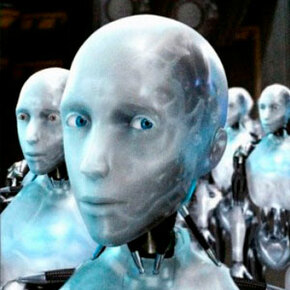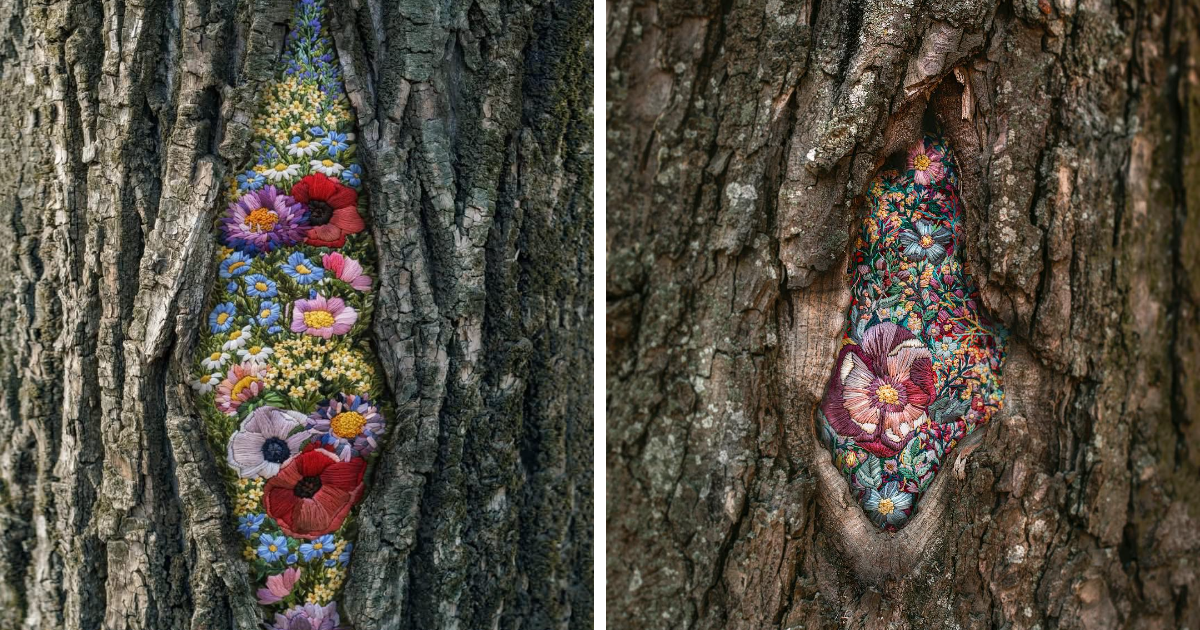
20 Fascinating Facts You Won’t Find In Your Textbooks Illustrated By Factourism (New Pics)
Back in late 2018, Copenhagen-based infographic agency Ferdio launched a new project titled Factourism. In it, they would share fascinating facts about our world paired with colorful illustrations, proving that learning new things can be both fun and easy, as well as gaining over 57k followers in the process.
Over the years, the project shared nearly 400 illustrations, and even published a book featuring a collection of some of the most extraordinary ones. We’ve already featured some of Factourism‘s illustrations before here, and now they’re back with even more – check them out in the gallery below!
More info: factourism.com | Facebook | Instagram | Twitter
#1

Image source: factourism
Turning left puts drivers against the flow of vehicles coming the other way, which leads them to wait 30–45 seconds each time with the engine running. A new routing system introduced a few years ago, which calculates routes favouring right turns, saves the whole UPS 10 million gallons (38 million litres) of fuel every year. On top of that, right turns are more safe, leading to only 1.2% of crashes instead of 22.2% for left turns.
#2

Image source: factourism
Thanks to modern television screens, dogs are able to watch TV as well as humansHuman eyes can register around 55 images a second, while dogs, better at detecting quick movements, can see around 75 images a second. Older television sets were flickering around 60 times a second, good for humans but not adapted to dogs. New television screens have higher frequencies, so dogs can finally appreciate what happens on TV.
#3

Image source: factourism
Play-Doh was originally sold and used as a wallpaper cleaner. The company making Play-Doh, then called Kutol, was mainly producing soap, until the supermarket chain Kroger ordered wallpaper cleaner, a common product at a time where households were heated with dirty coal, from them in the 30s. They started producing the clay-like cleaner, and it soon became their main product. However, the use of wall cleaner declined greatly by the time the 50s arrived. That’s when employee Kay Zufall came in: she had seen a magazine wallpaper cleaner used as a material for kids to model Christmas decorations. She suggested selling the dough as a creative toy for kids. They removed the detergent in it, added colouring and an almond smell, and finally marketed it as Play-Doh.
#4

Image source: factourism
Some cities in the US used to have ‘ugly laws’, fining people $1 to $50 for how they looked. And by ugly, mayors mostly meant poor or with a disability. The laws were a pretext to force beggars, people with missing limbs or visible diseases, to stay away from public space. From the 19th century, several cities of the West and Midwest had laws like this. The last one, in Chicago, was only repealed in 1974.
#5

Image source: factourism
Several species of ants, attines, started farming 55 to 60 millions of years before humans did. Their favourite food? Fungus. They organise themselves around cutting grass and leaves, bringing them back to their colony, watching after fungus growing on the harvested crop, and then collecting and eating the fungus. The fungus species evolves along with each ant species.
#6

Image source: factourism
A donut-shaped planet is technically possible. Even if extremely unlikely to happen naturally, the possibility of a planet shaped as a torus — the true name of a doughnut shape — is not physically impossible. Researchers have made simulations and calculated the gravitational forces implicated, and everything seems alright. The weather would be very peculiar, and there could even be moons with orbits going through the central hole.
#7

Image source: factourism
Wine glasses are seven times larger than they used to be. The average wine glass from the 1700s was about 66ml, against 417ml in the 2000s. That is a finding of research conducted by scientists from the university of Cambridge. Comparing 411 glasses from the past 300 years found in museums, catalogues, and other sources, they found that their size got six to seven times larger during that time. The larger increase has been happening in the last few decades, leading to the question of what it can mean in terms of alcohol consumption.
#8

Image source: factourism
The visibly never ending shelf-life of honey is surprising: archaeologists have excavated honey from thousands of years ago, and it’s still unspoiled. One reason is that as a substance, honey has very low moisture, an environment in which very few bacterias can survive. Another is that it is very acidic, again a characteristic that bacterias don’t like. Finally, the bees produce hydrogen peroxide from the nectar, a known antiseptic, to the point that honey can be used in traditional medicine to treat wounds against infection. In a word, honey is hell for bacterias and other microorganisms, so as long as it is sealed and not mixed with anything, they won’t dare grow on it and spoil it.
#9

Image source: factourism
29% of San Francisco’s air pollution comes from Asia. Geochemists have analysed the air of the San Francisco Bay Area, both from an urban spot and from a coastal location, looking at pollution particles smaller than 2.5 microns over the course of six months. They have found that 29% of these were 208Pb particles, a specific form of lead that is characteristic of East Asia.
#10

Image source: factourism
Plants can communicate with one another. Some correspond with each other by emitting volatile organic chemicals, some even send electric signals. The meaning of the messages can have different goals, such as alerting about insects, advising nice directions for growing, regulating temperature, etc.
#11

Image source: factourism
If everyone on the planet consumed as much as the average US citizen, four Earths would be needed to sustain them. A set of data produced by the Global Footprint Network measures the ecological impact of the populations of different countries. Their footprint is calculated using statistics about the natural resources used to make the products they consume, as well as their carbon emissions. The researchers calculated the amount of land and sea necessary to sustain each country. The whole world needs 1.5 Earths to be sustainable the way we consume now, and if the entire humanity were to consume the way the United States does, we would need 3.9 Earths. Yet it isn’t the worst, as it is topped by Kuwait (5.1 Earths), Australia (4.8 Earths), the United Arab Emirates (4.7 Earths), and Qatar (4.0 Earths).
#12

Image source: factourism
Pigeons, birds with a pretty good visual memory, were trained at classifying mammograms: some with and some without cancerous cells. If they were right, they would be rewarded with a treat. After two weeks, they were able to be 85% accurate. And when using four birds working on the same images, the accuracy of diagnosis went up to 99%. The birds’ newfound medical skills could be used to improve medical imagery data.
#13

Image source: factourism
Don’t mess with a crow: they will remember your face. Researchers have been either nice or not nice to crows for scientific purposes, all while wearing different masks. Crows were able to remember which masks were not nice to them, and scans of their heads showed that a region of the brain associated with bad memories — until now only studied in mammals — was activating in the presence of a face they remembered as threatening.
#14

Image source: factourism
Cheerleading started as an all-male activity. Cheerleading in the US can be traced back to the late 19th century, when male students rebelled and, besides taking part in riots, also started practising sports in universities. One of the earliest documented examples of cheerleading dates from 1877, happening at Princeton University. It’s only in 1923 that the University of Minnesota allowed women to join, and most universities followed much later, in the 1940s. By the 1970s, most cheerleaders were women.
#15

Image source: factourism
Baby giraffes are born falling 1.5 metres to the ground. It’s no secret that giraffes are very tall animals, but a lesser known fact is that they give birth standing up. The first experience of a giraffe calf is a 1.5 metres (about 5 feet) high fall. Infants are then able to stand up in the first half hour of their life, and can run within 10 hours.
#16

Image source: factourism
The powerful producers of the MGM film required the teenage actress to look as young and thin as possible so as to fit their whim, so they imposed on her a strict diet of some soup and coffee, along with an abundant amount of cigarettes so that would not get too hungry. On top of that, she was put on pills to reduce her appetite and to keep her awake during the long filming hours and a forced lack of sleep. Not exactly “wonderful”.
#17

Image source: factourism
The Scots language has 421 words for snow. The Historical Thesaurus of Scots is a big dictionary of the Scots language, the native language of Lowland Scotland, in which academics have been compiling every single known word the language ever had (even though it focuses for now on vocabulary about the weather, sports and games, topics cherished by Scots). And a lot of them have to do with snow: 421 collected so far.
#18

Image source: instagram.com
#19

Image source: factourism
The most frequently used password is 123456. “123456” has been for several consecutive years the most widely used password, according to a list collecting all those which were hacked and leaked. The top 10 also includes the very imaginative “123456789”, “12345678”, “1234567”, and “12345”. As for the second most used password, it is “password”.
#20

Image source: factourism
There are no stop signs in Paris(the last one was removed in the 2010s). With over 2 million inhabitants and a considerable amount of cars, the French capital has managed to do just fine without any stop signs, a sight that is usually very common in cities. At any unmarked crossing, drivers follow the “priority to the right” rule: cars coming from the right have the right of way. And of course, bigger intersections have traffic lights. It wasn’t always the case, with the last known stop sign disappearing from its street sometime between 2012 and 2014.


















Got wisdom to pour?